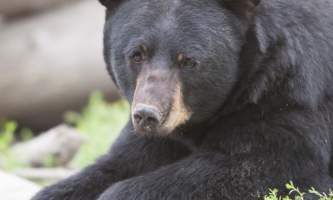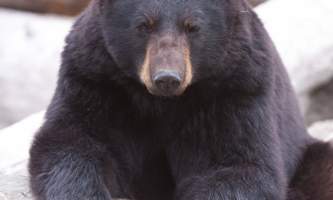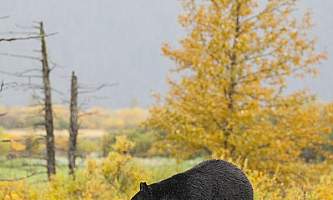Black Bear
Howdy hey! We are at one of the Black Bear habitats at the Alaska Wildlife Conservation Center.
Black Bears are one of the more adaptable animals in the entire animal kingdom, as they are currently found in almost every state of the United States, with the exception of Hawaii.
Size is also a product of their environment, as their size will vary greatly across the United States. In the state of Alaska, our typical Black Bear is going to settle in at approximately 300 pounds and will not be nearly as large as some of their counterparts in the lower 48 states. This is largely due to the competition for food they have in Alaska from the other members of the bear family, as well as other predators in state.
At birth, cubs weigh 8 to 10 ounces. Adult females (sows) may weigh 150 to 350 pounds, while adult males (boars) may weigh 200 to 400 pounds. Black bears exhibit delayed implantation, in which the fertilized embryos do not actually implant in the female’s uterine wall until she enters her den in the fall time. This is believed to be an adaptation to ensure that only females that have accumulated enough fat during the summer actually give birth.
Black bears are omnivores and consume both plant and animal matter. After emerging from torpor in the spring, bears graze on sedges, grasses and other herbaceous plants, search for insects, and seek out carrion. Moose calves and deer fawns are also sought in the springtime. As summer progresses, salmon is an important food item in coastal areas. In the fall, black bears seek out berries. Bears forage nearly constantly throughout the late summer and fall to gain fat needed for the long winter sleep.
Despite their common English name, black bears are not always black in color. In some areas of the state, brown or “cinnamon” black bears are not uncommon, and in the region surrounding the community of Yakutat in southeast Alaska, there is a blue-gray color phase known as a “glacier bear”. Some islands off the coast of British Columbia are actually home to white-black bears! Interestingly, brown bears (Ursus arctos) also vary in color from platinum blonde to nearly black. Color is not a reliable method for differentiating between the two species. More reliable traits to look for are smaller overall size in black bears, taller ears, a straight facial profile compared to the brown bear’s “dish-shaped” face, and lack of the brown bear’s distinctive shoulder hump. Another common saying we like to use in Alaska when differentiating between the two is species is “black bears have the rump while brown bears have the hump.”.




